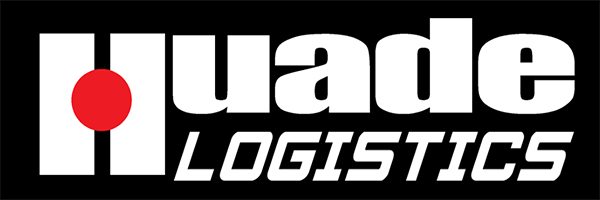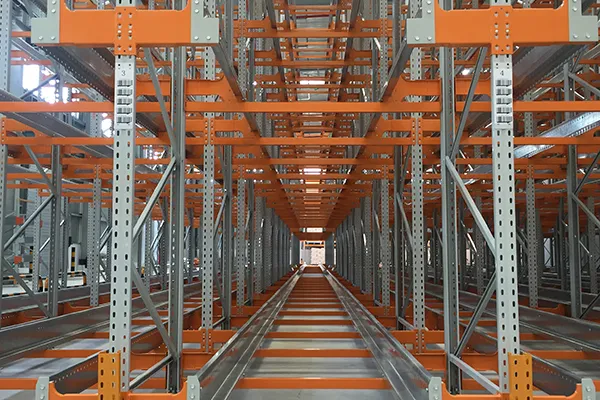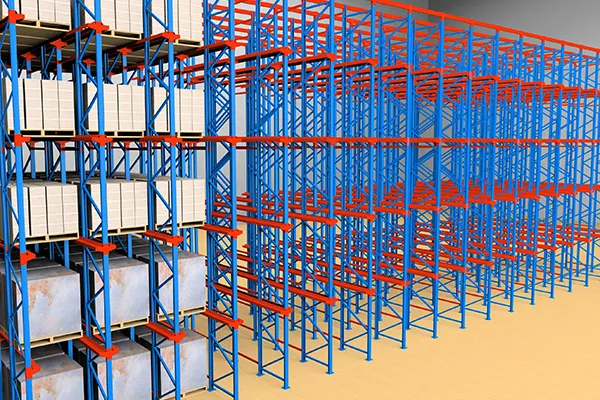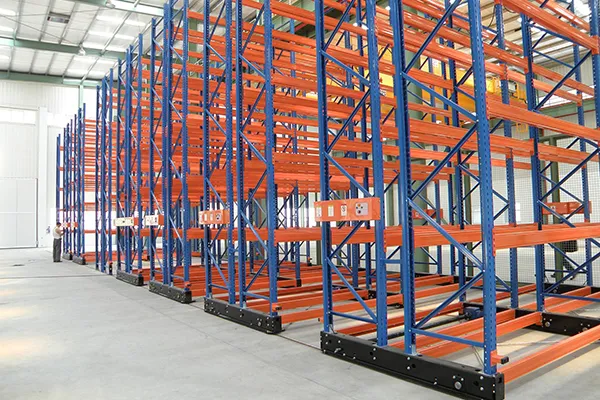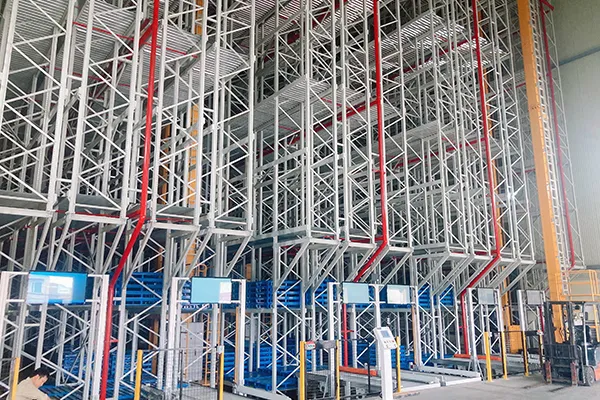Introduction
In the relentless pursuit of operational efficiency and cost reduction, warehouse managers and logistics planners are constantly exploring storage solutions that maximize every square foot of available space. Among the most effective strategies for achieving unparalleled storage density is the implementation of Drive-in Racking. This pallet storage system represents a paradigm shift from traditional selective pallet racking, offering a unique approach to inventory management for specific product types. By allowing forklifts to drive directly into the rack structure, this system fundamentally changes the spatial dynamics of a warehouse. This article delves deep into the intricacies of drive-in racking, exploring its structural design, functional advantages, ideal applications, and critical considerations for implementation, providing a thorough understanding of how it can transform your storage operations.
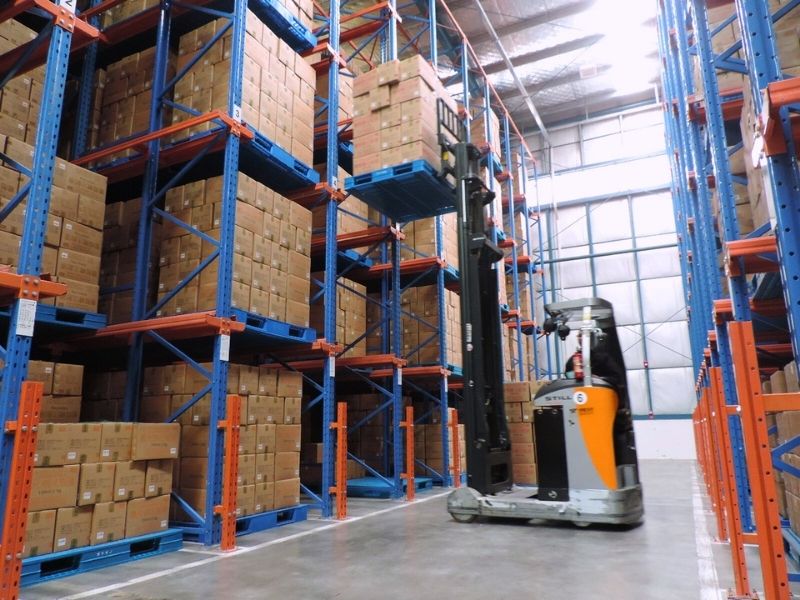
Understanding the Structural Design
The architecture of a drive-in racking system is specifically engineered for depth and accessibility. Unlike conventional systems with multiple aisles, this configuration significantly reduces aisle space by creating a series of deep storage lanes.
- The Core Framework: At its heart, the system consists of upright frames that run the entire depth of the storage lane. These frames are connected by horizontal rails, which serve as the guides and support for the pallets. There are no individual beam levels as seen in selective racking. Instead, the rails are positioned at each storage level, creating a continuous shelf along the entire lane.
- Storage Lane and Guide Rails: Each lane is designed to store multiple pallets deep. The guide rails ensure that pallets are placed accurately and safely onto the load beams. The structure is typically designed with a slight inward slope to facilitate the natural movement of pallets and enhance stability during placement and retrieval.
- Entry and Exit Points: A drive-in racking system can be configured as either a “Drive-in” or a “Drive-through” system. In a Drive-in setup, pallets are stored and retrieved from the same end, following a Last-In, First-Out (LIFO) inventory method. A Drive-through system has entry and exit points at opposite ends, enabling a First-In, First-Out (FIFO) approach, which is crucial for perishable goods or items with strict expiration dates.
Key Functional Characteristics and Advantages
The unique design of the drive-in pallet racking system translates into several distinct functional benefits that directly address common warehouse challenges.
- Exceptional Space Utilization: The primary advantage is the dramatic increase in storage density. By eliminating numerous aisles, this system can increase storage capacity by up to 60-75% compared to selective racking, making it ideal for facilities where floor space is at a premium or prohibitively expensive.
- High-Density Storage for Slow-Moving Goods: This system is perfectly suited for storing a large quantity of identical SKUs. It is exceptionally efficient for products with low turnover rates, seasonal items, or bulk raw materials that do not require frequent, selective access.
- Operational Efficiency in Specific Scenarios: While not as fast for order picking as selective racking, it offers high efficiency in loading and unloading entire lanes of homogeneous products. The forklift operation is streamlined, as the driver only needs to travel into a single lane to store or retrieve multiple pallets.
- Structural Durability and Safety: High-quality drive-in racking systems are manufactured from robust steel and are designed to withstand the rigors of daily forklift traffic. Integrated safety features, such as column guards, rail end protectors, and pallet stops, are essential components that prevent damage to both the racking and the forklifts.
Ideal Applications Across Industries
The versatility of the drive-in racking system makes it a valuable asset across a wide range of sectors. Its application is defined by inventory profile rather than a specific industry.
- Food and Beverage: Ideal for storing large quantities of canned goods, bottled beverages, and non-perishable food items. The Drive-through variant is particularly beneficial for implementing FIFO for products with shelf lives.
- Cold Storage and Freezer Warehouses: In these environments, where space is incredibly costly to cool, maximizing storage density is paramount. The reduction in aisle space directly translates to lower energy consumption and higher ROI.
- Beverage and Brewing Industry: Perfect for storing pallets of finished products like beer, wine, and soft drinks before distribution.
- Chemicals and Pharmaceuticals: Suitable for storing bulk raw materials or finished products that are stable and have a long shelf life, provided they are not hazardous in a way that prohibits high-density storage.
- Third-Party Logistics (3PL) and Distribution Centers: Many 3PLs use drive-in racking to manage large, homogenous inventories for specific clients, optimizing the use of their warehouse footprint.
Technical Specifications and Considerations
A successful implementation relies on a clear understanding of the system’s technical requirements and limitations.
- General Load Capacity: The load-bearing capacity of a drive-in racking system is substantial. Typical systems can handle loads ranging from 1,000 kg to 2,500 kg (approximately 2,200 lbs to 5,500 lbs) per pallet position. The exact capacity must be engineered based on the specific pallet size, load weight, and forklift specifications.
- Forklift and Operator Requirements: Operating within a drive-in rack requires skilled and certified forklift drivers. The forklifts used must be narrow-aisle or standard counterbalanced trucks that are precisely maneuverable. The working environment is more confined, demanding high levels of concentration and safety awareness from the operator.
- Critical Considerations for Implementation:
-
- Inventory Management: This system is not suitable for a wide variety of SKUs. Its efficiency is derived from storing large quantities of a single product. Mixing SKUs within a single lane leads to inefficiencies and potential stock management errors.
- Accessibility Trade-off: The gain in density comes at the cost of immediate accessibility to every pallet. Pallets stored at the back of a LIFO lane are inaccessible until the ones in front are removed.
- Professional Design and Installation: Due to its structural complexity and interaction with heavy machinery, the design and installation of a drive-in rack must be handled by qualified professionals. This ensures compliance with all local safety regulations and structural integrity.

Conclusion
The decision to invest in a drive-in racking system is a strategic one. It is not a one-size-fits-all solution but a highly specialized tool. If your business struggles with the cost of warehouse space and manages large volumes of a limited number of SKUs with predictable turnover, then this high-density storage solution can yield significant returns. By consolidating inventory into a compact footprint, you can reduce real estate costs, streamline certain storage operations, and ultimately build a more resilient and cost-effective supply chain. Before proceeding, a thorough analysis of your inventory profile, operational workflow, and a consultation with a professional racking supplier is an indispensable step toward unlocking the full potential of your warehouse space.
